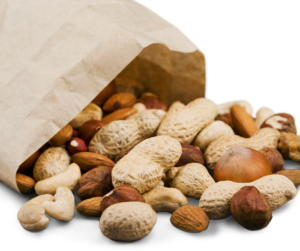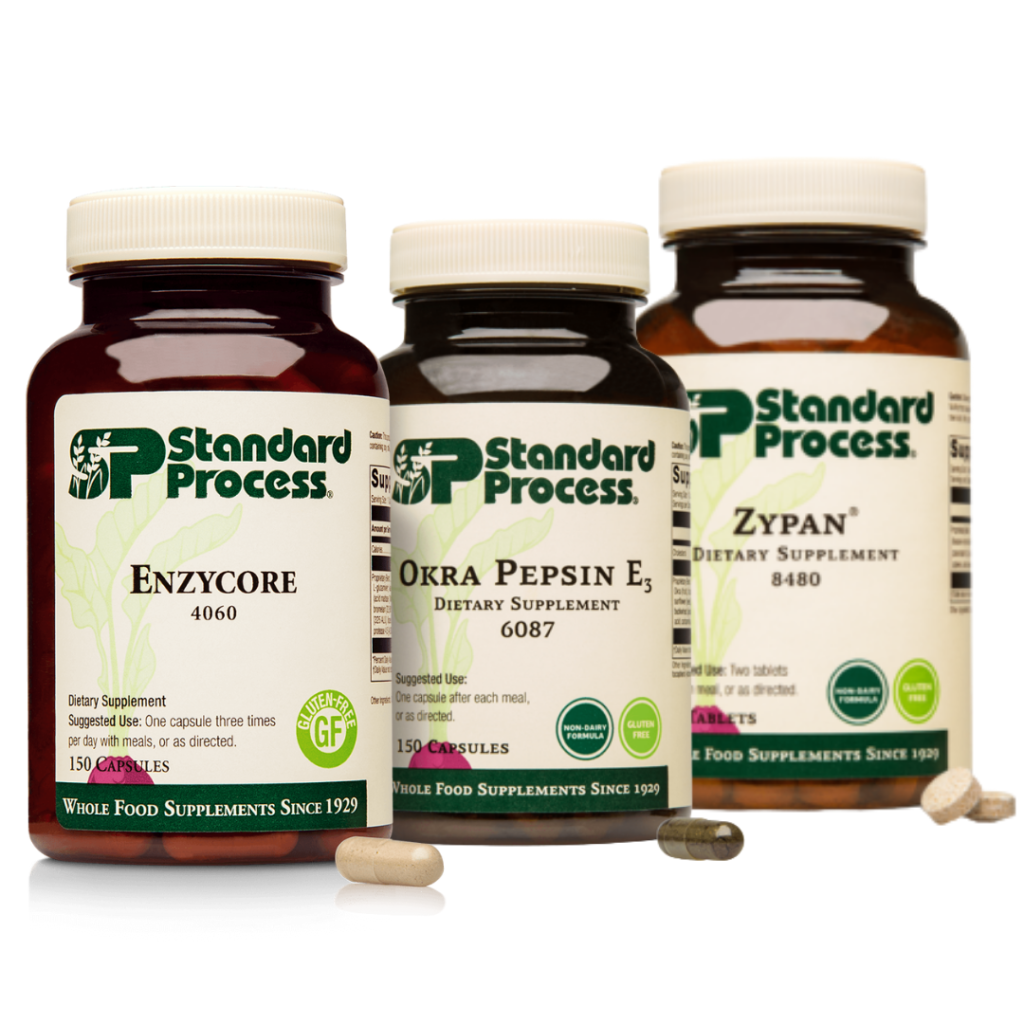By Claire Bacon, ACN, CNC
Many people tend to confuse food sensitivities with food allergies. Being “sensitive to” and “allergic to” something are two very different things. True allergies can bring on an immediate reaction, and can be life-threatening. Food sensitivities, however, are much more subtle and less intense.
Unlike the immediate response from food allergies, the symptoms for sensitivities may not show up for a few days. How hard is it to remember what you ate yesterday, much less three days ago? The response time typically ranges between 24 to 72 hours. If symptoms vary in intensity, it’s difficult to make the connection. Furthermore, two individuals within the same family may feel very different responses to the same food. Our unique biological makeup as well as our environmental exposures both play a part in how our bodies respond to food.
Wouldn’t it be nice if food sensitivity testing could answer all our questions? Yes, but unfortunately it doesn’t work out that way. Many people bring long lists of suspect foods to our consults, following sensitivity testing. Usually, the person is still confused and overwhelmed, and lacking a practical sense of what foods are “safe” to eat. That’s why our first step is usually to take a step back, and understand what factors may have disrupted the gut lining, Then, we find out what typical foods may be coming in on a regular basis.

Understanding Leaky Gut as a Root Cause
Typically, we say the skin is a window to the gut. Visible irritations on the skin correlate to inflammation of the internal skin that forms our digestive tract. Leaky gut syndrome is a complex set of symptoms resulting from some prior damage to the gut. Leaky gut could affect anyone at any age. Sometimes, there could be a specific event like an infection or a round of antibiotics that might trigger some unusual symptoms. Or, there could be more of a chronic irritation, like daily use of over-the-counter NSAIDs or too much sugar for a long period of time. We talk with parents about these potential causes all the time using this handout.
Part of the problem is foods that used to be perfectly healthy are now highly toxic. In 1994, modern agriculture changed dramatically when the FDA approved the first genetically modified organism, or GMO, for commercial use. They have been hybridizing wheat, adding more GMO crops, and more glyphosate pesticides ever since. It’s a hard concept for many people to grasp. Can you imagine explaining to your Grandma why her Wonder Bread isn’t so wonderful anymore?

Physical Signs of a Food Sensitivity:
People who have food sensitivities could go a lifetime without ever making the connection. This is due to delayed reaction times and vague or changing symptoms. The subtle changes may be considered “normal” and go undiagnosed. Sadly, some people are too embarrassed to seek treatment and may suffer in silence. Common physical signs include:
- Migraines
- Bloating, Gas or Mucus in the stool
- Diarrhea or Constipation
- Puffy or Itchy Eyes
- Generalized Pain or Fatigue
- Acne or Rashes

8 Most Common Food Sensitivities:
1. Dairy
Lactose intolerance is a sensitivity to dairy. Lactose is a natural sugar found in dairy milk, which is digested by lactase enzyme produced by the body. Unfortunately, most adults do not produce enough lactase. This commonly results in bloating, gas, and constipation issues.
2. Wheat Gluten
Gluten is a certain protein found in barley, rye, and wheat, among other grains. Wheat gluten can be highly disruptive to a permeable gut lining, especially for people with autoimmunity or thyroid issues. The inflammation process is mostly due to the way these grains are processed in the United States. Often, farmers spray glyphosate right before harvesting, to dehydrate the wheat. Trace residues remain after processing, which can damage our gut lining. You may notice when you travel outside the U.S., pasta and bread don’t provoke the same response. The difference is a stark contrast to our food supply here!

3. Corn
In 1996, Monsanto released the first genetically modified corn. Their GMO corn grew increasingly popular due to its insect resistance and herbicide tolerance. At this time, over 81 percent of the corn produced in this country is GMO, and labeling is not required. One problem is that GMO corn may trigger reactions because it contains foreign genes from another organism. It contains a toxin that’s spliced directly into its genes, designed to attack the gut of insects that feed on corn. Some research shows that the toxin affects our own gut lining. We tend to see that corn consumption aggravates neurological issues; headaches, seizures, and motor tics are common.
4. Soy
Similar to the GMO corn situation, the vast majority of soy produced in this country is GMO. Most processed food products contain soy, making it extremely difficult to avoid. More children than adults seem to be sensitive to soy, and some children may eventually outgrow the sensitivity. Often, symptoms may include eczema, nausea, abdominal pain, vomiting, diarrhea, nasal congestion, and swelling. Later in life, soy sensitivity can contribute to hormonal problems with estrogen metabolism – for both men and women.

5. Fructose and FODMAPs
FODMAP stands for fermentable oligo-, di-, monosaccharides, and polyols. It’s a group of short-chain carbs found naturally in many sweet and high-fiber foods. These include: apples, honey, beans, beer, and many more. Fructose is a simple sugar and a type of FODMAP. We often see people with conditions like SIBO or Rheumatoid Arthritis are severely reactive to high fructose foods. We recommend the Monash University Food Intolerances app to help with discerning non-reactive foods.
6. Peanuts and Tree Nuts
Between 2007-2016, peanut allergies became 445 percent more common. During this same time, tree nut and seed allergies grew by 603 percent. Even if you don’t have severe symptoms, consuming too many nuts, seeds or peanuts can still have an impact over time. This can be due to aflatoxin – a microscopic mold potentially linked to a variety of health issues. Surprisingly, most people tolerate coconut well. Whereas, walnuts, almonds, hazelnuts, pecans, cashews, pistachios, Brazil nuts, macadamia nuts, and pine nuts should require more caution.

7. Eggs
If you’ve never gone a certain length of time without having eggs, you may not realize their effect on how you feel. The majority of egg-intolerant people seem okay with the egg yolk, but it’s the egg white, or albumin, that is more inflammatory. People are really doing a disservice to themselves by making egg white-only omelets. There is a protein in the egg yolk that cancels out the inflammatory protein in the white. Did you know, that many vaccines are produced using an egg-based manufacturing process? The small amount of egg protein (ovalbumin) present may contribute to sensitivities in some people.
8. Nightshades
The most commonly known nightshades include tomatoes, eggplant, bell peppers white potatoes, and the herb Ashwagandha. These foods can be inflammatory to people with autoimmune conditions. A first step in healing is to eliminate all the potential triggers. This can be tricky because many spice blends, like curry powder and steak seasoning, usually contain nightshades. After some time working on gut healing, you can experiment with adding these foods back in to check for tolerance.

What To do?
Our favorite approach is to review the diet, and determine which suspect foods are frequently consumed. First, choose two or maybe three foods so the effort is simple and sustainable. Next, eliminate the foods for two to three weeks, and then add them back in (with gusto). Look to see if symptoms go away, and if they return with the return of the food. It’s a totally free experiment that leaves no room for confusion. We describe the plan in this handout, here.
Supplements To Ease Food Sensitivity Issues:
If you suspect food sensitivities, certain supplements can alleviate your discomfort. These are our favorites to help with upper digestive issues:

- Zypan: This supplement aids in protein digestion and provides hydrochloric acid support to the stomach. The lower pH sanitizes your food, protects you from bacteria in undercooked meat, and breaks down your proteins better when you eat just a little too much.
- Enzycore: A vegetarian digestive enzyme medley, this supplement breaks down vegetable cellulose and proteins throughout the entire digestive tract. It also contains l-glutamine to heal the stomach lining. This product goes a long way to prevent both constipation and flatulence.
- Okra Pepsin E3: A protein digesting enzyme, this supplement is a soothing aid for sensitive parts of your digestive tract when breaking down foods. The mucilaginous part of the okra sticks the enzymes to the intestinal walls, aiding in breaking down accumulated food debris. It’s excellent for diverticulitis, or for times when your food sensitivities might be causing excess mucus in your stool. Everyone could benefit from a yearly cleaning out with Okra Pepsin!
We also absolutely love the beneficial enzymes in Carbo-G and Gluterase. These can be so helpful when you’re in a situation (like a holiday party) where you can’t avoid all your sensitivities. These are available in-office!
In Conclusion:
Luckily, consumer awareness and restaurant accommodations for food sensitivities are growing. We have more alternative choices now than ever before!
We hope these tips help you identify easy ways to tweak your diet!
Please schedule a consult if you need some help getting your gut and diet right!


